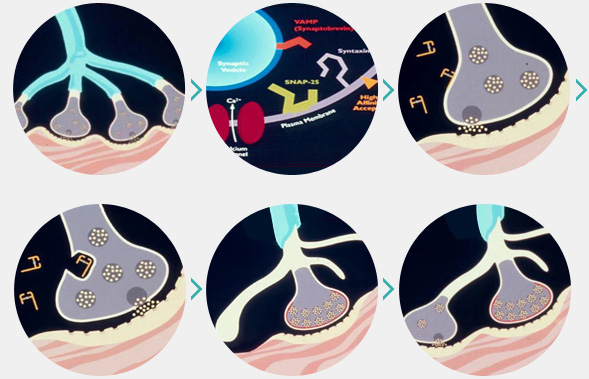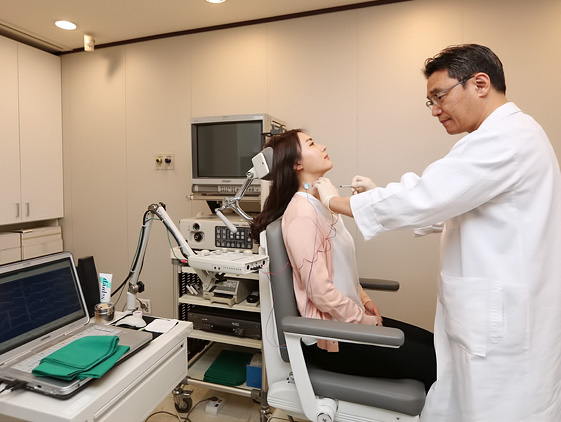What is Botulinum Toxin (Botulinum toxin A type)?
Clostridium botulinum is a bacterium that produces botulism, the toxin botulin. This bacterium produces 7 different types of botulin toxin which can paralyze the myoneural system. These 7 types of toxin are called botulinum toxin and are labeled as A, B, C, D, E, F, and G types.
The History of Botulinum Toxin and its Medical Uses
Development and use of botulinum toxin as a possible bioweapon began at least 60 years ago.
Botulinum toxin is the most poisonous substance known. It is about 6 million times stronger than the poison of a rattlesnake,
and a single gram of crystalline toxin, evenly dispersed and inhaled, would kill more than 1 million people.
Consequently, researches on the use of botulinum toxin as a bioweapon began.
The US biological weapons program first produced botulinum toxin during World War II at Port Dittrick of Maryland.
Because of concerns that Germany had weaponized botulinum toxin, more than 1 million doses of botulinum toxoid vaccine
were made for Allied troops preparing to invade Normandy on DDay.
The US biological weapons program was ended in 19691970 by executive orders of President Nixon.
However, Dr. Edward Schantz of the food research institute and the Erick Johnson Research Center and produced the toxin for research activities.
For 10 years, Dr. Alan Scott used botulinum toxin in animal experiments, and in 1968 he used it for the first time in humans to
treat strabismus. Later, Botulinum Toxin received FDA approval for treatment of strabismus, torticollis, and spasmodic dystonia.
In 1984, Dr. Blitzer first used botulinum toxin for spasmodic dysphonia, and it is still used for treatment.
Mechanism of Action of Botulinum Toxin


1. The Neuromuscular Junction
The part where the muscle and nerve join is called ‘neuromuscular junction,’ and it is where the signal from the
nervous system releases ‘acetylcholine,’ a chemical deliverer that is stored in bubblelike forms at the nerve ends.
2. The Inner Structure of the Nerve Ends
In the nerve endings, there are various types of proteins that release the acetylcholine stored inside the synaptic vesicle and
allows it to fuse with the nerve endings. The proteins include SNAP25, VAMP, and syntaxin.
Botulinum type A and E cleave SNAP25, and types B, D, F, and G cleave VAMP, while type C1 cleaves syntaxin and SNAP25.
3. Botulinum Fusion
Botulinum toxin intentionally paralyzes the neuromuscles.
The injected botulinum toxin enters the heavy chain of the muscle and fuses with the nerve endings.
4. Penetration of Botulinum toxin
The injected botulinum toxin fuses with the nerve ending and goes inside.
Then the botulinum toxin cleaves SNAP-25, the protein inside the nerve ending, and blocks acetylcholine release.
5.Regeneration of Nervous Sprouts
When acetylcholine is not released any more, the nervous signals cannot be delivered to the muscle. The muscle will not contract,
, and will have chemical paralysis. When time passes, new sprouts will grow at the nerve endings. This is called ‘sprouting.
6. Formation of a new Neuromuscular Junction
The newly sprouted nerve joins the muscle to form a neuromuscular junction, removing the effects of Botulinum Toxin.
With the general amount injected, Botulinum Toxin cannot bring a permanent effect.
When large amounts are injected into the muscle, the muscle will weaken more than expected.
However, this is not permanent, and the action in the neuromuscular junction will happen again due to the regeneration of the nerves.
Some may think that Botulinum Toxin injection for spasmodic dysphonia might weaken the vocal fold muscles, but this is not true. The amount of Botulinum Toxin injected in the vocal fold is about 1/501/100 of that injected for cosmetic treatments. Therefore, it is wrong to think that Botulinum Toxin weakens the vocal fold muscles. Occasionally, when Botulinum Toxin is performed by unskilled specialist who does not clearly understand the mechanism of Botulinum Toxin treatment this could induce some side effects that people
worry. In 1984, Dr. Blitzer first used Botulinum Toxin to treat a patient with spasmodic dysphonia, and there were no reports of vocal fold muscles being weakened until now. In 1996, Dr. Hyung-Tae Kim of Yeson Voice Center performed the percutaneous Botulinum Toxin injection guided by electromyogram for the first time in Korea, and no symptoms of vocal fold muscle weakening have been found up to now.
Currently, Botulinum Toxin is used to treat spasmodic dysphonia, facial spasm, blepharospasm, hyperhidrosis, migraine, and other myotonus disorders.
Benefits of ‘Premium Botulinum Toxin Membership’ for patients diagnosed with spasmodic dysphonia
For the safe procedure of Botulinum Toxin treatment, Yeson Voice Center is injecting a small dosage of Botulinum Toxin on a monthly basis.
To make the price reasonable for patients, we’re offering the ‘Premium Botulinum Toxin membership.’
Upon registering for this membership, you can benefit from all the services included.
This annual membership does not include consultation, examination and registration fees but all fees related to Botulinum Toxin treatment.




The benefits of membership
include the following


The benefits of membership include the following
Botulinum Toxin injections will be available on your desired date for 1 year without paying extra cost (on working hours only).
With regular injections at a one and half monthsperiod, you don’t need to worry about your voice becoming bad.
You can receive the minimum amounts of Botulinum Toxin frequently, so you do not have to go through a period of hoarseness.
You can save up to 70% of the annual Botulinum Toxin injection price.
Appointments for Botulinum Toxin injection must be made one week prior through a phone call.